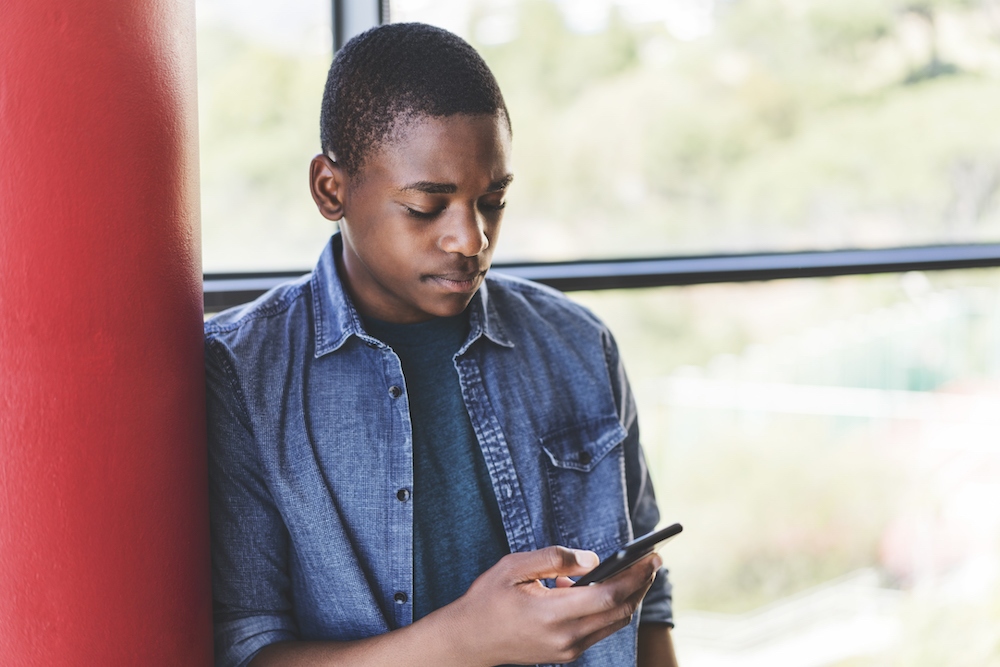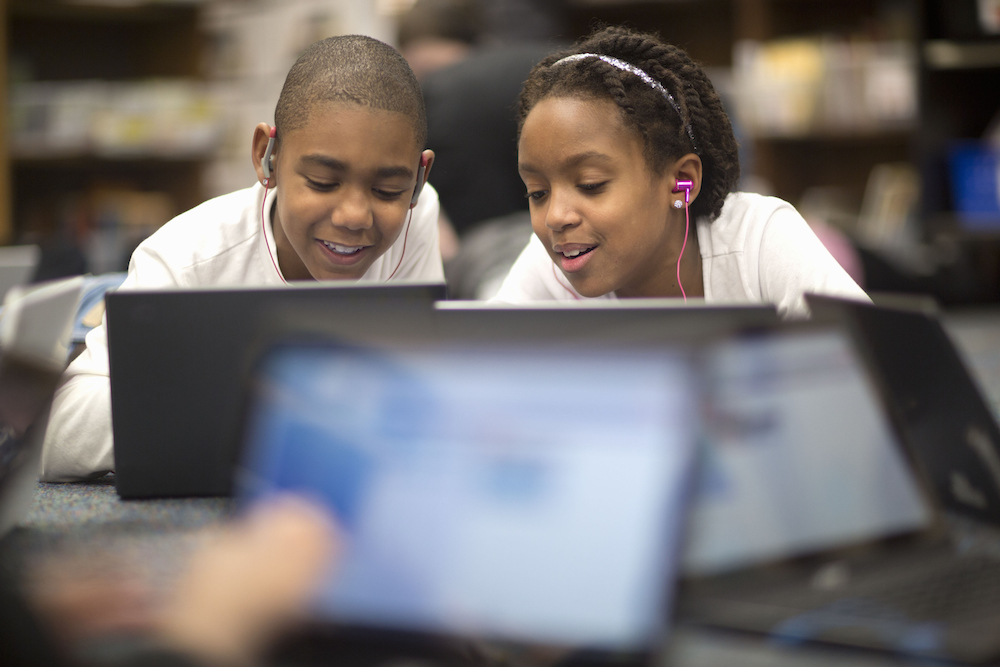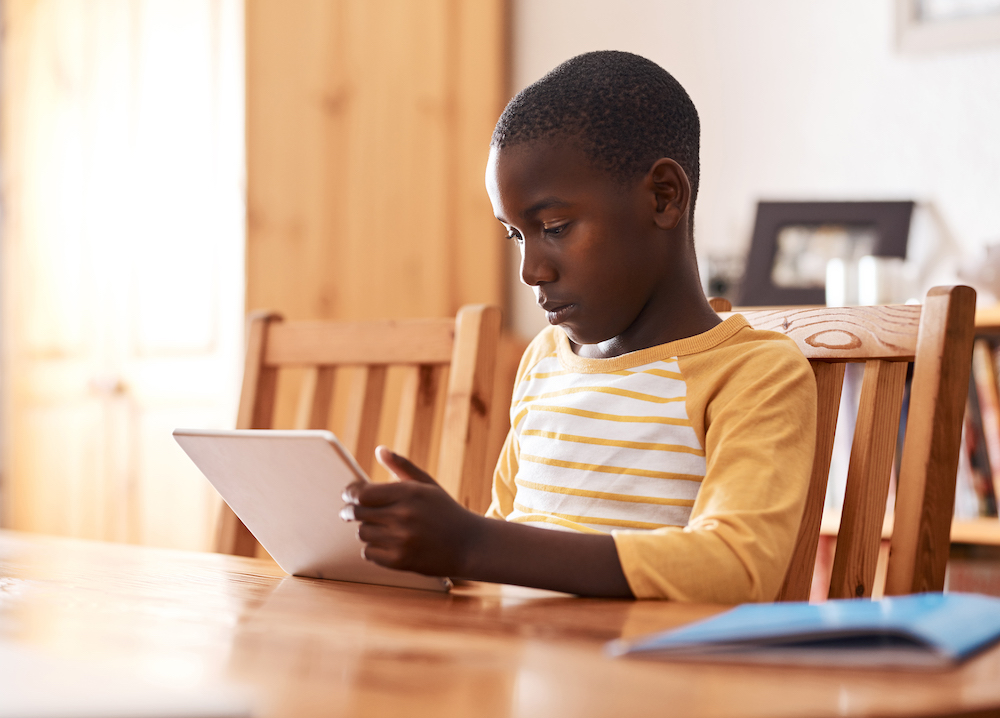Lesson 2: Digital Information and Sharing
Before you start the lesson, make sure to read through the lesson overview and the lesson preparation. The Facilitator Guide can also help you prepare.
Lesson Overview
Learners will be able to identify what can be shared over the internet. Learners will be able to identify safe and secure methods for sharing information on the internet. Learners will also be able to balance the risks and benefits of using public connections.
Lesson Preparation
ESTIMATED TIME
ESSENTIAL QUESTION
- What is digital information and how can it be shared online?
PREPARATION
- Learners will need to be seated in pairs, triads, or small groups for discussion.
- Collect 5-10 images of different ways to share information. (Examples: A picture of two people having a conversation, a video playing, someone reading a book, someone texting a friend, etc. If you do not have access to these types of images you can draw them yourself or have students draw ways people share information to augment the class interaction section.)
- Print images out or display in a presentation deck.
- Provide learners with a list of the key vocabulary for this lesson.
OPTIONAL: ISTE DIGCITCOMMIT COMPETENCY
- ENGAGED: I use technology and digital channels for civic engagement, to solve problems, and be a force for good in both physical and virtual communities.
Lesson Hook [10 minutes]
Teacher's Note
Lesson hooks provide facilitators with a baseline for how much learners know prior to engaging in the content of the lesson.
TELL YOUR STUDENTS
Tell your partner two things: 1) Your favorite food or hobby and 2) Your birthday.
Next, discuss which of these facts would be considered general information and which would be considered digital information.
Teacher's NoteAfter two minutes of sharing with a partner, have the group share which of these answers they think is general information and which would be considered digital information.
- Answer: The favorite food or hobby is general information, and the birthday would be considered digital information.
After students are done sharing, write these definitions on the board.
- Information: Facts or information about someone or something.
- Digital information: Information that a computer can process. This can be things like numbers, words, pictures, videos, or sound. For example, it can be an email you send, text message to a friend, photograph on social media, or even a video.
Group Discussion [5 minutes]
Learners will develop a deeper understanding of the vast amount of data shared on the internet.
ASK YOUR STUDENTS
- How many people do you think use the internet?
Teacher's NoteAllow learners to share and write their guesses on the board.
After a few guesses, tell them the answer.
TELL YOUR STUDENTS
Almost 4.57 billion people use the internet or 59% of the global population and that number continues to grow.
This generates A LOT of computer data. Computer data is all the information that is sent, seen, shared, stored, and processed on computers.
Next, we are going to explore how this data is shared and how to protect yourself and keep your data safe.
Class Interaction [20 minutes]
Learners will develop a deeper understanding of the types of data shared on the internet.
Teacher's NoteSeparate the class into small groups.
Present your students with the 5-10 images that you collected that show ways to share information.
Examples could include a picture of two people having a conversation, a video playing, someone reading a book, someone texting a friend, etc.
A reminder: If you do not have access to these types of images you can draw them yourself or have students draw ways people share information to augment this activity.
TELL YOUR STUDENTS
Discuss the images on screen in small groups for about one minute per image and determine whether the image represents the sharing of digital information or not.
Teacher's Note
Allow time for debate if groups have differing opinions.
Class Interaction [20 minutes]
Learners will develop an understanding about how to keep digital information safe on the internet.
Teacher's Note
Have your students remain in their small groups.
ASK YOUR STUDENTS
- Is your information safe on the internet?
- Why or Why not?
Teacher's Note
Provide two minutes and have learners share their ideas with the whole group.
TELL YOUR STUDENTS
Next, we are going to discuss four ways to keep you and your information safe on the internet.
Sometimes, you are given a choice as to which network you would like to use. It’s important to remember that there are serious risks if you connect to the wrong network.
Public Connections (Unsecure, Untrusted)
- Networks that don't require a password to login in.
- Other people on the same network may see your information. They could steal information you send over the network or monitor what you are doing.
- For example, if you are at the movie theater and you see your school's network name on your phone when looking for a public connection, you might consider that network is trying to imitate or "spoof" your school's network to collect passwords from unsuspecting students.
Private Connection (Secure, Trusted)
- Require a password, have encryption enabled, and those on which you are certain the network you are signing into is the one the network name is representing.
- Secure and trusted networks offer the most protection. Consider the context or location of the network.
Password-Protected Network
- When setting up a password-protected network, the owner must choose to turn on the router’s encryption protocol.
- Common encryption protocols are Wired Equivalent Privacy (WEP), Wireless Internet Protected Access (WPA) or WPA2.
- These protocols make it so that the information that is sent wirelessly over the network is encrypted (or “scrambled”). Encryption was created to make it more difficult for hackers to see what you are sending.
Websites
- HTTPS is a standard used by websites to encrypt data passed over the internet.
- Encryption can prevent any third party from easily viewing the data from your connection. It provides an extra layer of security and can be used in any browser by adding “https://” in front of the URL you use (e.g., https://www.mysite.com). However, not all websites support HTTPS.
TELL YOUR STUDENTS
Using the chart and based on the conversations we have had today about information on the internet and how to access it, take a few minutes to answer the following three questions in your small groups and be prepared to share.
ASK YOUR STUDENTS
- What are the benefits of connecting to the internet?
- What are some of the drawbacks of connecting to the internet?
- What might be some security concerns when using a wireless connection versus a wired internet connection?
Takeaways [5 minutes]
Teacher's Note
Recap the lesson with these points.
TELL YOUR STUDENTS
The internet is a vast network of data and used by 59% of the world’s population (and growing!)
Digital information is information that is shared on the internet in the form of numbers, words, pictures, videos, or sounds.
The internet can be accessed through a wireless or wired connection and needs to be able to balance the risks and benefits of using public connections.
The internet is an important way for people to participate in society at the local, national, and global level.
Congrats!
You've finished the lesson



 Previous Lesson
Previous Lesson 




